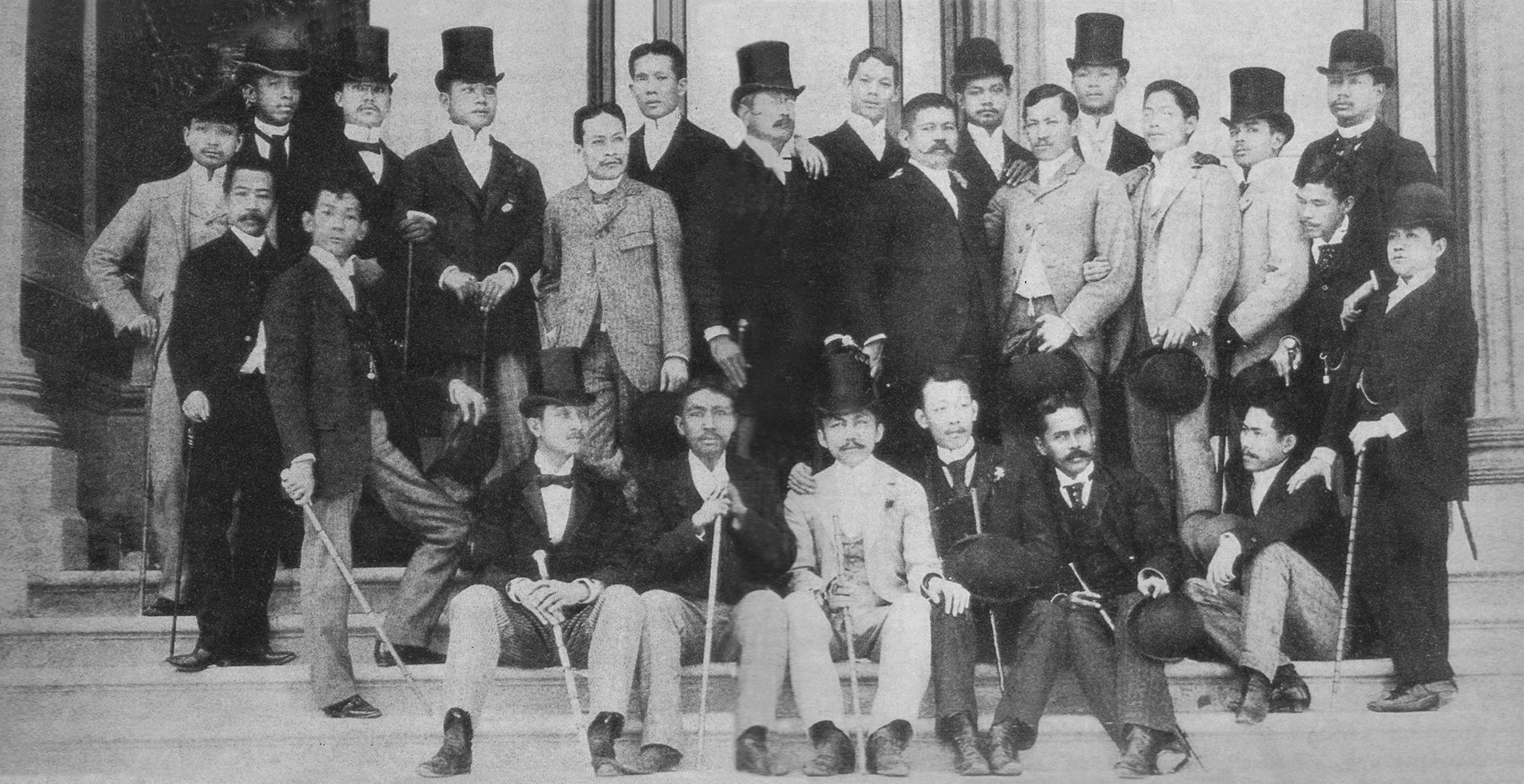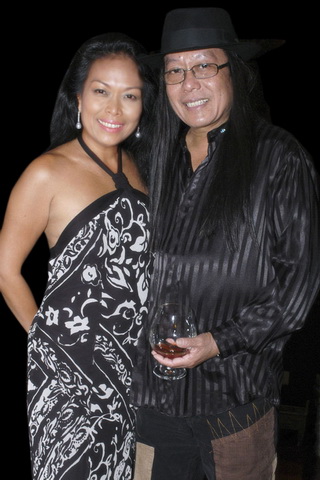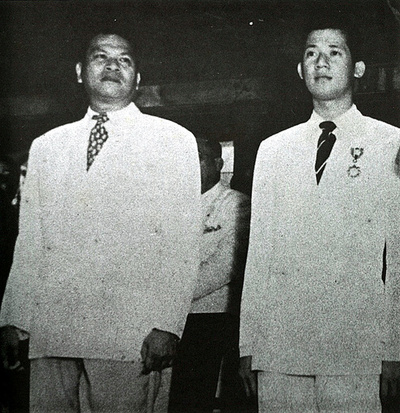|
Bayan Ko
"Bayan Ko" (usually translated as "My Country"; es, Nuestra patria, lit=Our Fatherland) is one of the most recognizable patriotic songs of the Philippines. It was written in Spanish by the Revolutionary general José Alejandrino in light of the Philippine–American War and subsequent American occupation, and translated into Tagalog some three decades later by the poet José Corazón de Jesús. The song, which is a ''kundiman'', is often considered the unofficial second national anthem of the Philippines, and is sometimes sung by Overseas Filipinos groups after the ''Lupang Hinirang'' or by itself. It is sometimes assumed to be a folk music because of its popularity, and due to the nature of its lyrics it has been used as a protest song by different political groups at various points in Philippine history. History Origin The Spanish lyrics of ''Bayan Ko'' were originally written for the Severino Reyes ''zarzuela'', '' Walang Sugat'' ("no wound"). Attributed to the '' propagan ... [...More Info...] [...Related Items...] OR: [Wikipedia] [Google] [Baidu] |
Philippines
The Philippines (; fil, Pilipinas, links=no), officially the Republic of the Philippines ( fil, Republika ng Pilipinas, links=no), * bik, Republika kan Filipinas * ceb, Republika sa Pilipinas * cbk, República de Filipinas * hil, Republika sang Filipinas * ibg, Republika nat Filipinas * ilo, Republika ti Filipinas * ivv, Republika nu Filipinas * pam, Republika ning Filipinas * krj, Republika kang Pilipinas * mdh, Republika nu Pilipinas * mrw, Republika a Pilipinas * pag, Republika na Filipinas * xsb, Republika nin Pilipinas * sgd, Republika nan Pilipinas * tgl, Republika ng Pilipinas * tsg, Republika sin Pilipinas * war, Republika han Pilipinas * yka, Republika si Pilipinas In the recognized optional languages of the Philippines: * es, República de las Filipinas * ar, جمهورية الفلبين, Jumhūriyyat al-Filibbīn is an archipelagic country in Southeast Asia. It is situated in the western Pacific Ocean and consists of around 7,641 islands t ... [...More Info...] [...Related Items...] OR: [Wikipedia] [Google] [Baidu] |
Propaganda Movement
The Propaganda Movement encompassed the activities of a group of Filipinos who called for political reforms in their land in the late 19th century, and produced books, leaflets, and newspaper articles to educate others about their goals and issues they were trying to solve. They were active approximately from 1880 to 1898, and especially between 1880 and 1895, before the Philippine Revolution began. Prominent members included José Rizal, author of novels '' Noli Me Tángere'' and '' El filibusterismo'', and essays; Graciano López Jaena, publisher of ''La Solidaridad'', the movement's principal organ; Mariano Ponce, the organization's secretary, and Marcelo H. del Pilar. Specifically, the Propagandists aims were the following: * Reinstate the former representation of the Philippines in the Cortes Generales or Spanish Parliament * Secularize the clergy (i.e. use secular or diocesan priest rather than clergy from a religious order) * Legalize Spanish and Filipino equality * ... [...More Info...] [...Related Items...] OR: [Wikipedia] [Google] [Baidu] |
Recessional Hymn
A recessional hymn is a hymn placed at the end of a church service to close it. It is used commonly in the Catholic Church The Catholic Church, also known as the Roman Catholic Church, is the List of Christian denominations by number of members, largest Christian church, with 1.3 billion baptized Catholics Catholic Church by country, worldwide . It is am ... and Anglican Church, an equivalent to the concluding voluntary, which is called a Recessional Voluntary, for example a Wedding Recessional. See also Processional hymn References External links * Hymnology Order of Mass {{Song-stub ... [...More Info...] [...Related Items...] OR: [Wikipedia] [Google] [Baidu] |
PLDT
PLDT, Inc., formerly known as the Philippine Long Distance Telephone Company ( fil, Kompanya ng Teleponong Pangmalayuan ng Pilipinas), is a Philippine telecommunications, internet and digital service holdings company. It is one of the country's major telecommunications providers, along with Globe Telecom and startup Dito Telecommunity. Founded in 1928, it is the oldest and largest telecommunications company in the Philippines, in terms of assets and revenues. The company's core businesses are fixed-line telecommunications, mobile telephony services, broadband, and internet of things services under various brands. It also has investments in broadcasting, print media, utilities, and direct-to-home satellite services, among others. As of 2019, PLDT is listed in the Philippine Stock Exchange and New York Stock Exchange (the only Philippine company to be listed in NYSE) and is being controlled by First Pacific, a Hong Kong-based investment management company; Nippon Telegraph and ... [...More Info...] [...Related Items...] OR: [Wikipedia] [Google] [Baidu] |
JoAnne Lorenzana
Joanne Geraldine O. Lorenzana, known professionally as JoAnne Lorenzana, is a Filipino recording and performing artist, songwriter and former model, best known as an exponent of Original Pilipino Music in the mid-1980s to the 1990s. Biography Lorenzana is a graduate of the University of the Philippines. She was discovered by Filipino composer-singer-manager Nonong 'Dero' Pedero in 1984, who soon took the young singer under his management, employing her talent for commercial jingles. Prior to Lorenzana's formal foray into local Philippine entertainment, she front-acted for international acts held locally, such as Gloria Estefan and the Miami Sound Machine, Menudo (the former group of Ricky Martin) and the British jazz ensemble Shakatak. The following year, she was launched in a show billed as ''JoAnne: Her First Time'' to announce the entry of the pop artist into the music industry. Lorenzana represented the Philippines at the 5th Asean Song Festival held in Singapore in 1988 a ... [...More Info...] [...Related Items...] OR: [Wikipedia] [Google] [Baidu] |
History Of The Philippines (1986–present)
This article covers the history of the current Philippine republican state following the 1986 People Power Revolution, known as the Fifth Philippine Republic. The return of democracy and government reforms beginning in 1986 were hampered by national debt, government corruption, coup attempts, disasters, a persistent communist insurgency, and a military conflict with Moro separatists. During Corazon Aquino's administration, U.S. forces withdrew from the Philippines, due to the rejection of the U.S. Bases Extension Treaty, and leading to the official transfer of Clark Air Base in November 1991 and Subic Bay to the government in December 1992. The administration also faced a series of natural disasters, including the eruption of Mount Pinatubo in June 1991."Tarlac map" University of Texas in Austin Lib ... [...More Info...] [...Related Items...] OR: [Wikipedia] [Google] [Baidu] |
Freddie Aguilar
Ferdinand Pascual Aguilar (born February 5, 1953), better known as Freddie Aguilar or Ka Freddie Aguilar, is a Filipino folk musician. He is best known for his rendition of "Bayan Ko", which became the anthem of the opposition against the regime of Ferdinand Marcos during the 1986 People Power Revolution, and for his song "Anak", the best-selling Philippine music record of all time. He is heavily associated with Pinoy rock. He is well known internationally, claiming fame as one of the best musician-songwriters from the Philippines. Early life Freddie Aguilar's musical beginnings started when he was young. When he was 9-years-old, Aguilar played his first guitar. By the time he was 19-years-old, Freddie Aguilar performed on stage with Joshua Alcantara for the first time. Freddie Aguilar studied Electrical Engineering at De Guzman Institute of Technology but did not finish the degree program. Instead he pursued music, became a street musician, and then a folk club and bar music ... [...More Info...] [...Related Items...] OR: [Wikipedia] [Google] [Baidu] |
People Power Revolution
The People Power Revolution, also known as the EDSA Revolution or the February Revolution, was a series of popular demonstrations in the Philippines, mostly in Metro Manila, from February 22 to 25, 1986. There was a sustained campaign of civil resistance against regime violence and electoral fraud. The nonviolent revolution led to the departure of Ferdinand Marcos, the end of his 20-year dictatorship and the restoration of democracy in the Philippines. It is also referred to as the Yellow Revolution due to the presence of yellow ribbons during demonstrations (in reference to the Tony Orlando and Dawn song "Tie a Yellow Ribbon Round the Ole Oak Tree") as a symbol of protest following the assassination of Filipino senator Benigno "Ninoy" Aquino, Jr. in August 1983 upon his return to the Philippines from exile. It was widely seen as a victory of the people against two decades of presidential rule by President Marcos, and made news headlines as "the revolution that surprised ... [...More Info...] [...Related Items...] OR: [Wikipedia] [Google] [Baidu] |
Benigno Aquino Jr
Benigno "Ninoy" Simeon Aquino Jr., (; November 27, 1932 – August 21, 1983) was a Filipino politician who served as a senator of the Philippines (1967–1972) and governor of the province of Tarlac. Aquino was the husband of Corazon Aquino, who became the 11th president of the Philippines after his assassination, and father of Benigno Aquino III, who became the 15th president of the Philippines. Aquino, together with Gerardo Roxas and Jovito Salonga, helped form the leadership of the opposition towards then President Ferdinand Marcos. He was the aggressive leader who together with the intellectual leader Sen. Jose W. Diokno led the overall opposition. Early in his Senate career, Aquino vigorously attempted to investigate the Jabidah massacre in March 1968. Shortly after the imposition of martial law in 1972, Aquino was arrested along with other members of the opposition. He was incarcerated for seven years. He has been described as Marcos' "most famous political pri ... [...More Info...] [...Related Items...] OR: [Wikipedia] [Google] [Baidu] |
Senate Of The Philippines
The Senate of the Philippines ( Filipino: ''Senado ng Pilipinas'', also ''Mataas na Kapulungan ng Pilipinas'' or "upper chamber") is the upper house of Congress of the bicameral legislature of the Philippines with the House of Representatives as the lower house. The Senate is composed of 24 senators who are elected at-large (the country forms one district in its elections) under plurality-at-large voting. Senators serve six-year terms with a maximum of two consecutive terms, with half of the senators elected in staggered elections every three years. When the Senate was restored by the 1987 Constitution, the 24 senators who were elected in 1987 served until 1992. In 1992 the 12 candidates for the Senate obtaining the highest number of votes served until 1998, while the next 12 served until 1995. Thereafter, each senator elected serves the full six years. From 1945 to 1972, the Senate was a continuing body, with only eight seats up every two years. Aside from having its ... [...More Info...] [...Related Items...] OR: [Wikipedia] [Google] [Baidu] |
Ferdinand Marcos
Ferdinand Emmanuel Edralin Marcos Sr. ( , , ; September 11, 1917 – September 28, 1989) was a Filipino politician, lawyer, dictator, and kleptocrat who was the 10th president of the Philippines from 1965 to 1986. He ruled under martial law from 1972 until 1981 p. 189. and kept most of his martial law powers until he was deposed in 1986, branding his rule as "constitutional authoritarianism" under his Kilusang Bagong Lipunan (New Society Movement). One of the most controversial leaders of the 20th century, Marcos's rule was infamous for its corruption, extravagance, and brutality. Marcos gained political success by claiming to have been the "most decorated war hero in the Philippines", but many of his claims have been found to be false, with United States Army documents describing his wartime claims as "fraudulent" and "absurd". After World War II, he became a lawyer then served in the Philippine House of Representatives from 1949 to 1959 and the Philippine Senate fr ... [...More Info...] [...Related Items...] OR: [Wikipedia] [Google] [Baidu] |






